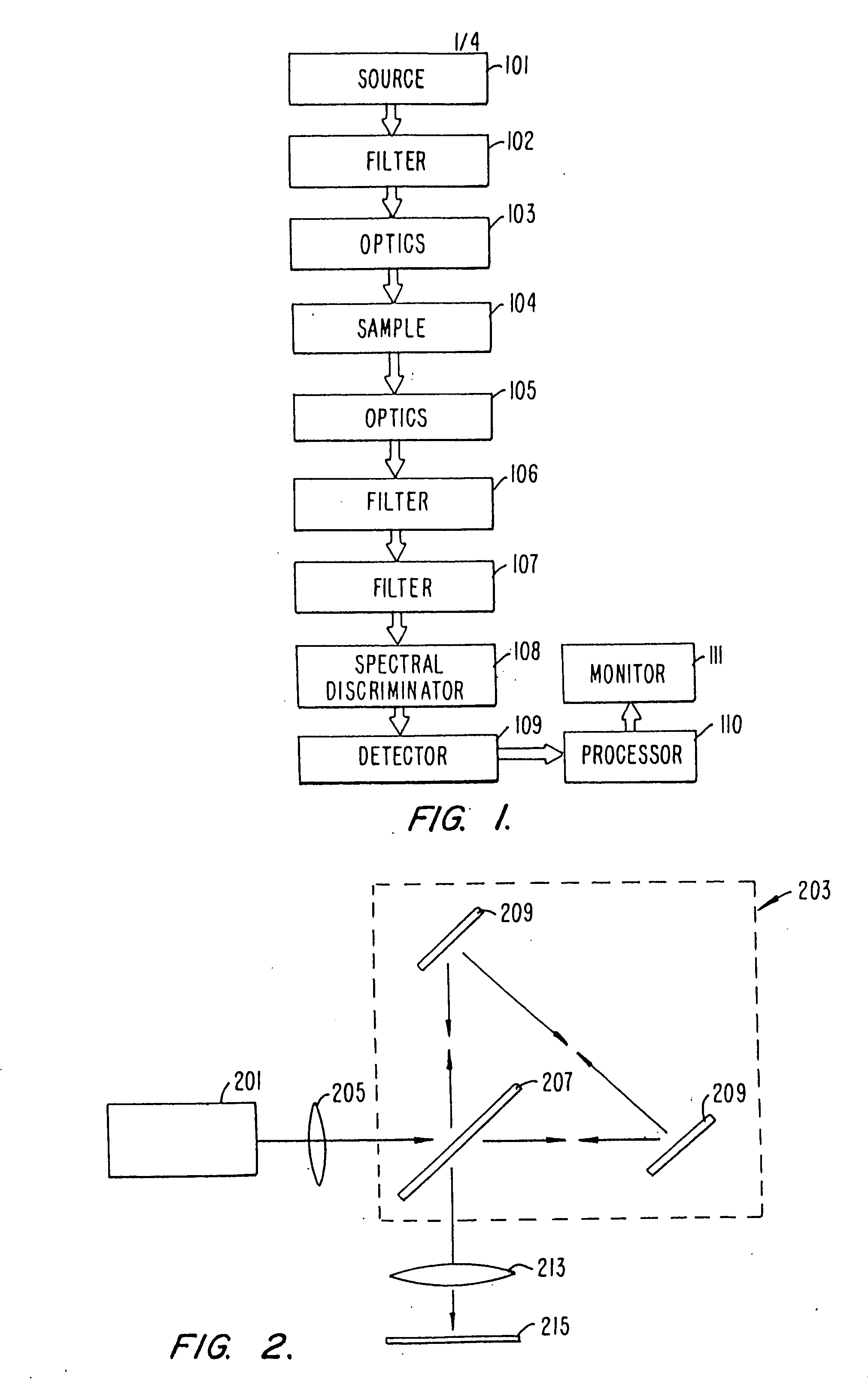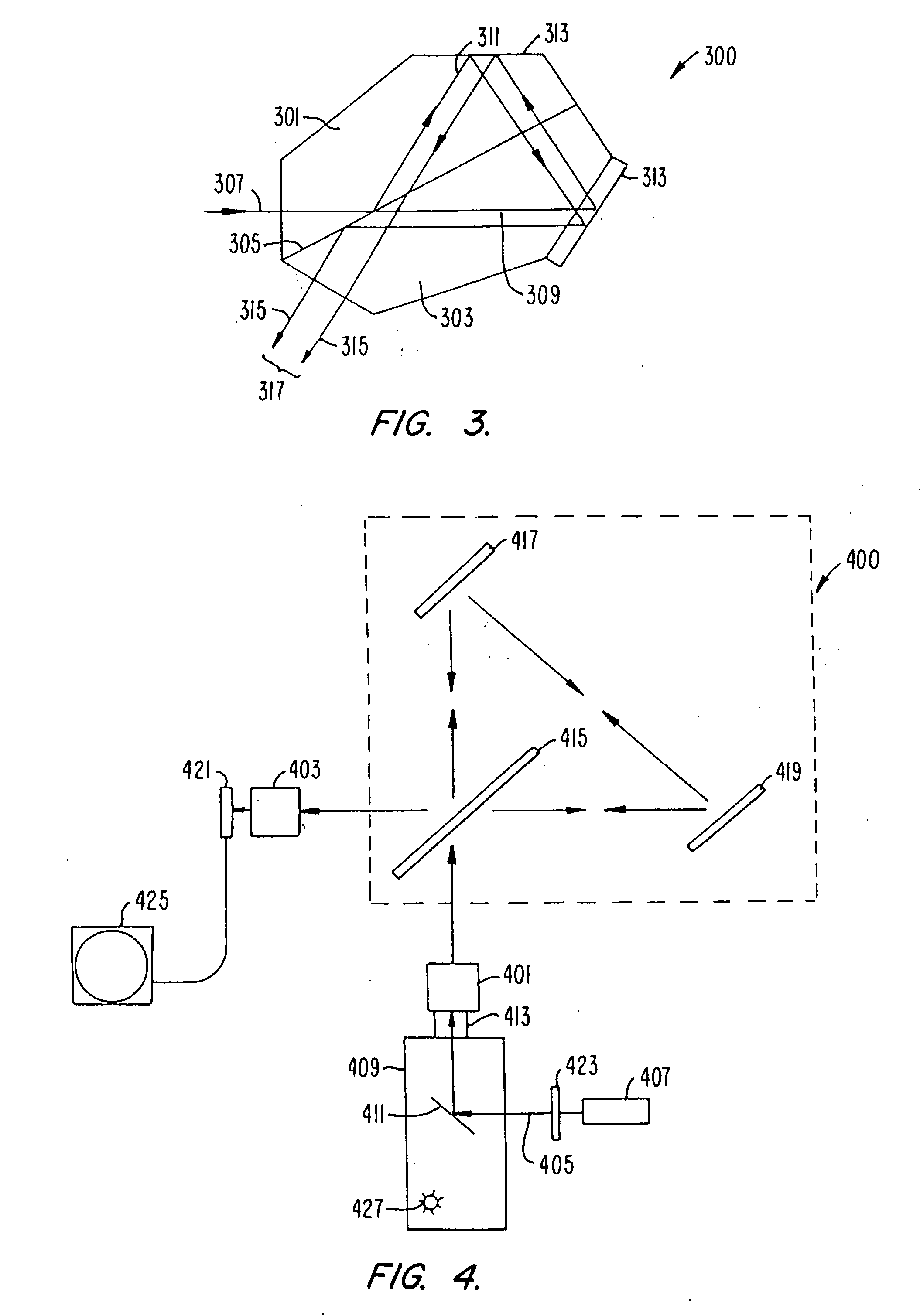Spectral imaging apparatus and methodology
- Summary
- Abstract
- Description
- Claims
- Application Information
AI Technical Summary
Benefits of technology
Problems solved by technology
Method used
Image
Examples
Embodiment Construction
[0030] Fluorescence in situ hybridization (FISH) has become an important technique for visualizing DNA sequences in metaphase chromosomes and interphase nuclei. The method is now in routine use in research laboratories for gene localization studies. For example, FISH is used to map genes to specific chromosome regions or to order clones along chromosomes to create or validate clone contigs. More recently, FISH has been applied in clinical situations to detect a variety of chromosome abnormalities.
[0031] Recent efforts in FISH have focused on the development of probe technology. At present, probes are available to a variety of chromosome regions, such as telomeres, or large single-copy genes. These probes have great utility in molecular cytogenetics, with one example being the use of centromere specific probes, derived from repetitive DNA at the centromere of chromosomes, in chromosome enumeration studies. Often these repeat sequences are unique to a specific chromosome and therefor...
PUM
 Login to View More
Login to View More Abstract
Description
Claims
Application Information
 Login to View More
Login to View More - R&D
- Intellectual Property
- Life Sciences
- Materials
- Tech Scout
- Unparalleled Data Quality
- Higher Quality Content
- 60% Fewer Hallucinations
Browse by: Latest US Patents, China's latest patents, Technical Efficacy Thesaurus, Application Domain, Technology Topic, Popular Technical Reports.
© 2025 PatSnap. All rights reserved.Legal|Privacy policy|Modern Slavery Act Transparency Statement|Sitemap|About US| Contact US: help@patsnap.com



